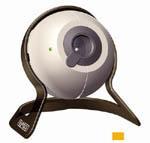
This handy guide, written by the guys at http://www.hoagieshouse.com/IR/ explains how to convert your webcam to see the infrared spectrum, which is ideal for seeing ghosts, UFOs etc.
Disclaimer: We have converted our own webcam and have found that this does work. However, we do not claim any responsibility for other people who may break their cameras whilst carrying out this conversion.
The camera used for this experiment was
a Sweex USB Webcam this camera was chosen for it's price and availability. As an
added bonus, but nothing to do with this project, this camera works fine under
Linux with a 2.6 Kernel using the sonixcam driver from
here.

Remove the plastic stand - try not to lose the little rubber bits from the holes in the camera sides. I think they are supposed to stop it from tilting upwards under the weight of the wire. Shame they don't work really.
Remove the screws. If your chosen webcam is held together in some other way you'll have to figure it out yourself.
Prize the casing apart.
If the Lens will not unscrew without removing the PCB (Like on the Sweex) then remove the PCB. It probably only slides in anyway.
Unscrew the lens assembly from it's holder. The focus on most webcams is achieved using the screw thread that is also used to hold the lens in. Turning it enough times will unscrew it completely. All camera's I've ever met won't let you do this without opening the case. The bit that comes out of the sweex looks like this.
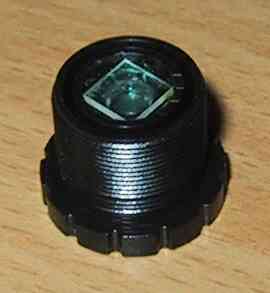
Looking at the lens assembly in the picture you can see a small square of glass stuck in the back. Though it appears clear in the picture above, it has a red tint to the eye as shown here.
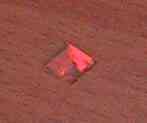
I've looked in a Creative camera and
seen the same thing there but theirs is round. This piece of glass is the Infra
Red Filter. It stops IR light getting through to the sensor. For our purpose
this is bad so remove this piece of glass. Removing a square one like the Sweex
is easy but I suspect the creative round one is harder.
Mitch White has this to say on the Alaris weeCam ...the
filter is actually "painted" on one of the lenses. At first I thought I wouldn't
be able to remove the filter, but I tried scratching at it with my fingernail,
and it started to come off! So, after scratching off all the redish stuff, I
reassembled the camera and it works perfectly!
Ken R has
converted a Creative camera though not the same as mine. Click here for his
instructions on adapting the lens assembly.
Newer Sweex models and many others have a lens design with a
cross section like this.
On here, the red is the IR filter, the green bit on here is a small plastic collar that holds things together. It looks at first glace like the same piece of plastic as the main lens holder assembly. This can be removed by levering it out with a sharp knife. This collar can be used to hold the new IR pass filter in place later.
Now we need to make a new filter only we want
one that blocks visible light and only lets IR through.
Dig out your holiday snaps and look at the negatives. NOTE: they must be colour
negatives, black and white ones won't work. Find a bit of absolute black, you
can usually find a bit before the real photo's start. Make sure it's really
black, a part of a normal photo may not be good enough.
Cut two small bits out similar in size to the IR filter that you just removed.
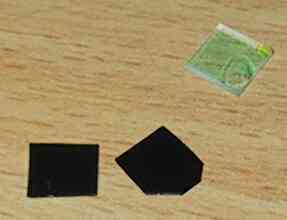
Fit the two bits of film where the old filter was.
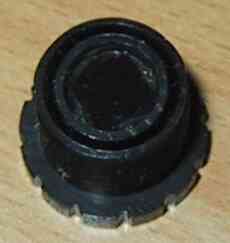
Do something to hold the bits of film in place. I used a little bit of wire as shown rather blurredly here. If you use superglue for this be careful not to get any on the actual lens or the part of the negatives that the IR light will pass through.
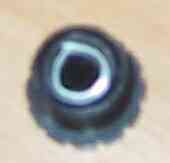
Screw the lens back into the camera PCB.
Re-assemble the rest of the camera.
Make sure you're using real sunlight or tungsten lighting. Those new fangled high efficency bulbs give out very little IR light.
Start up the webcam.
Take some pictures.
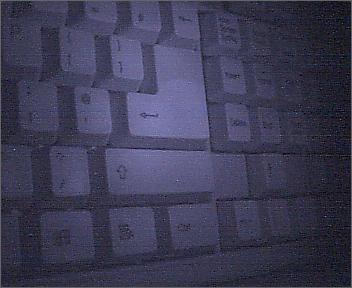
My Keyboard lit only by a TV remote control.
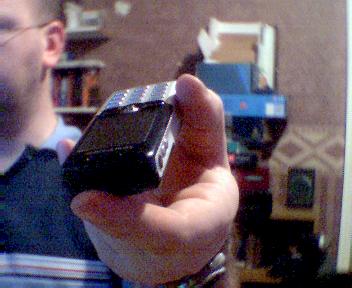
My mobile phone using an unmodified webcam.
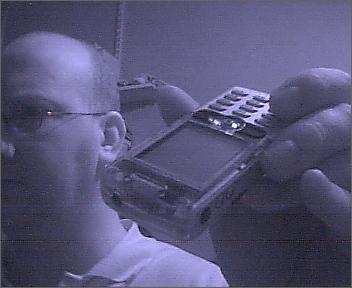
The same phone in IR.
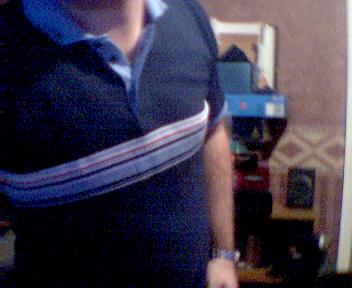
A polo shirt with a normal webcam.
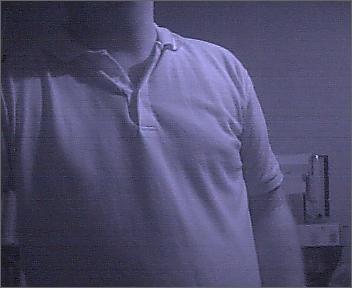
The same polo shirt with the IR webcam.
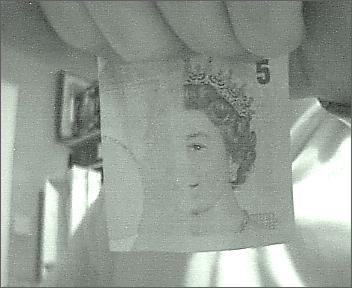
An English five pound note in IR. For any non-uk people, the
queen's face is not cut in half to the naked eye.
Mariusm has hacked a Logitech QuickCam Pro 4000 and posted a picture of some
American money. Click
here to see it.
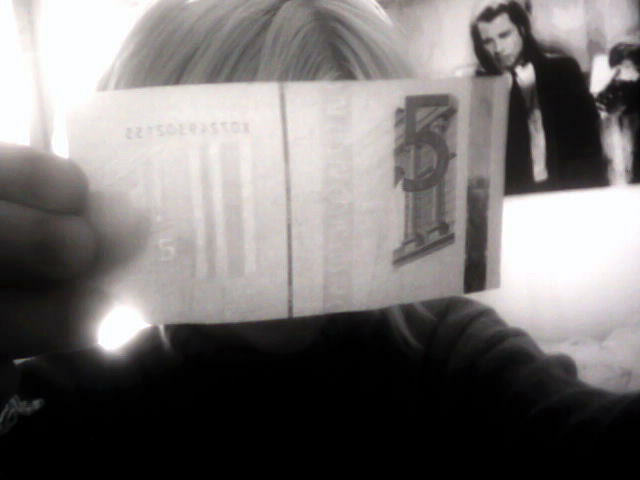
Moses Holmström sent me this picture of a 5 Euro note
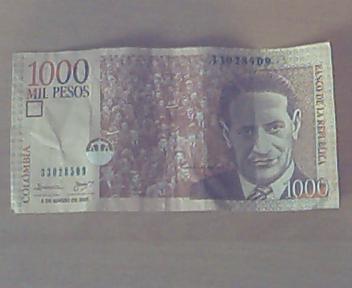
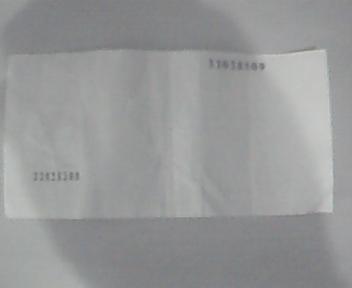
In Colombia they take it to the extreme.
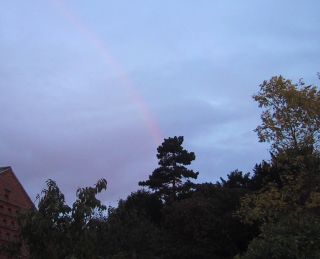
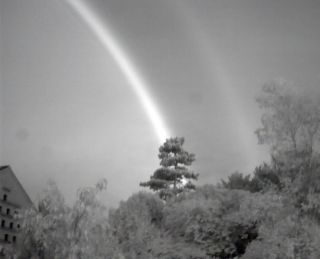
I tried to get these two shots from exactly the same place.
The rainbow is barely visible to the normal camera, on the IR one it's big,
bright and just outside the line of the visible one. A second rainbow on the IR
shot is also clearly visible.
A bottle of Coke in Infra Red is pretty much transparent.
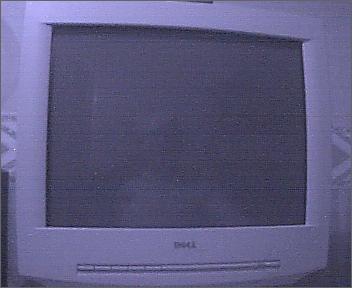
This monitor was on when I took this (running the webcam
software on it)
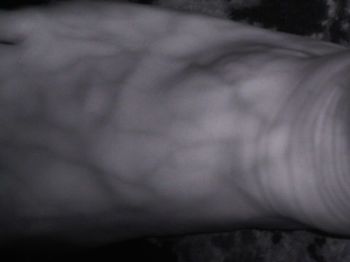
Veins show up well in IR.
A normal picture of the lake at Tollerton Hall.
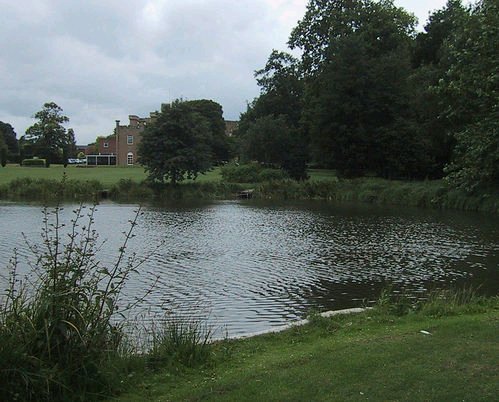
One day later and in IR.
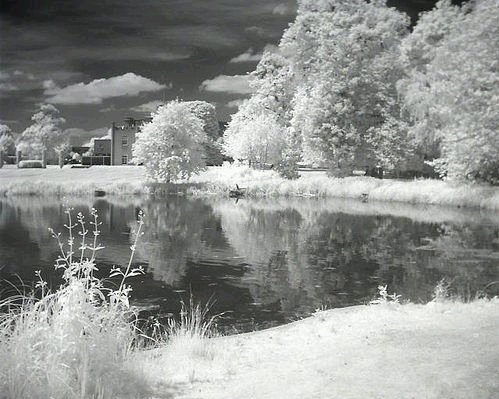
The top of this image shows the spectral response of an unmodified digital camera, below is the response of the IR modified camera. This image was taken using a CD as a diffraction grating and a tungsten bulb as the light source. Thought the method was not very scientific and the accuracy may be suspect, it gives some indication of the efficiency of film as an IR filter.
![]()
Yigit Guler has made
a very detailed page about hacking some Sony camera phones.
Robert
Gordon has taken the whole thing mobile.
Bad Ace Tech Show have some
video (near the bottom of the page)
Bill Koch has some good
comparison shots here.
Peter has an IR
camera spying on his cat's hideaway.
Known good and bad webcams
| Known good Cameras | ||
| Camera | Hacker | Notes |
| Alaris weeCam | Mitch White | See above RE:filter |
| Creative NX Pro | Moses Holmström | |
| Dexxa Webcam | James S A Glover | |
| IBM PC Webcam | Jorge Dominguez | The filter is hard to find |
| IBM PC Webcam | Saint Aardvark the Carpeted | Excellent name - more info here |
| ICatch (VI) | Smidge204 | A press fit plastic ring holds the filter |
| Old Logitech | schmu | |
| Logitech Quickcam Zoom | Eric Andersen | |
| Sony Eyetoy | Reggie Sanderson | |
| Quickcam Express | Jerome | Another Logitech success? |
| Older Philips USB model (not the sound one) | Lawrence McG | |
| Old Creative Webcam | Ken Ralto | See sub page about the filter |
| Vgear2 Minicam | Mick | |
| Nexxtech mini digital camera | James Jackson | Mini standalone digital camera |
| Oregon Scientific Flashcam | Me | Standalone camera. Had to scrape lens |
| Logitech Quickcam Chat | Lee vonKraus | Instructions here. |
| Trust Spyc@m 100 | Jorrit Kronjee | |
| Ge MiniCam Pro. | Mack Higgins | |
| Swex New Design | Johnny | As mentioned earlier. |
| DSE (Dick Smith Electronics) webcam | Paul B | |
| Cool-i-cam (blue micro edition) | Jared Belkus | |
| Logitech QuickCam Messenger | Daniel Nickels | |
| GE HO98064 | Richard Lee | |
| Genius VideoCam Look | JJ | |
| Philips ToUcam II | Artturi Vuorinen a.k.a. Saipher a.k.a. Cypher | |
| Micro Innovations Micro Webcam Mobile | Brian Shacklett | |
| PC Line PC Cam 300a | Kristiaan Davies | |
| Trust spacecam 120 | Andreas Gustavsson | |
| Kodak DVC 323 | James Tseng | I believe this is a standalone digicam. |
| Logitech quickcam messenger | Pix | |
| Argos WebCam with Microphone | Mark Everingham | |
| Q-TEC 100 USB | Peter | |
| Orite MC310 | Onur Akgun | Scrape the filter off. |
| GSm@rt A30 Camera | Jeremy Shepard | "Was a total pain in the ass." |
| ICatch (VI) | Smidge204 | |
| Fuji Finepix 1300 | mark hoekstra | Full story here. |
| Quickcam Pro 4000 | Jim Munro | Remove the adjustment lens and push the filter out |
| Logitech Quickcam
Sphere Called Quickcam Orbit in the US |
Ramon | Very expensive to do
this with Need to cut the filter out |
| Cameras where only some work | ||
| Camera | Notes | |
| Logitech QuickCam Express | Worked for Brandon H | |
| Cameras known not to work | ||
| Camera | Hacker | Notes |
| LabTec "Webcam USB PC Camera" | Bjoern Wieland | Filter is a coating on the sensor package |
| Creative PC-CAM 600 | Ben Bake | |
| Logitech Quickcam Pro 4000 | Brian Hansen | |
| Old IBM PC Camera (older than five years) | Ross Moffett | |
| Veo Stingray | Ross Moffett | |
Disclaimer: We have converted our own webcam and have found that this does work. However, we do not claim any responsibility for other people who may break their cameras whilst carrying out this conversion.